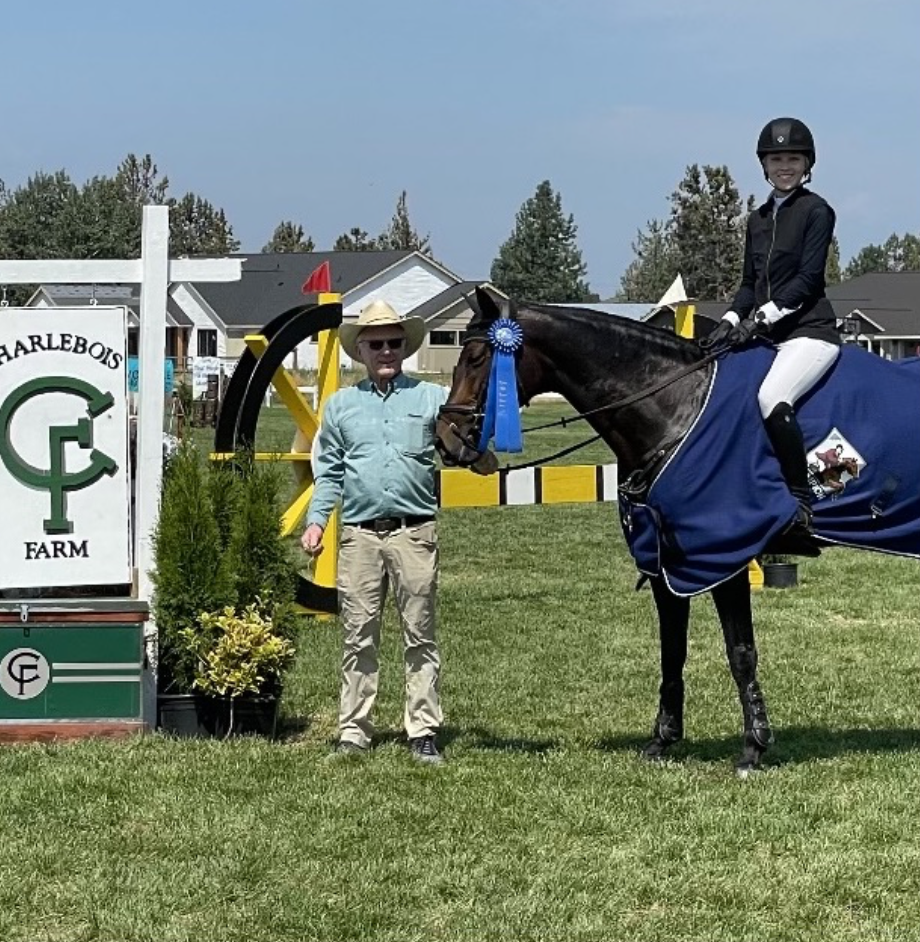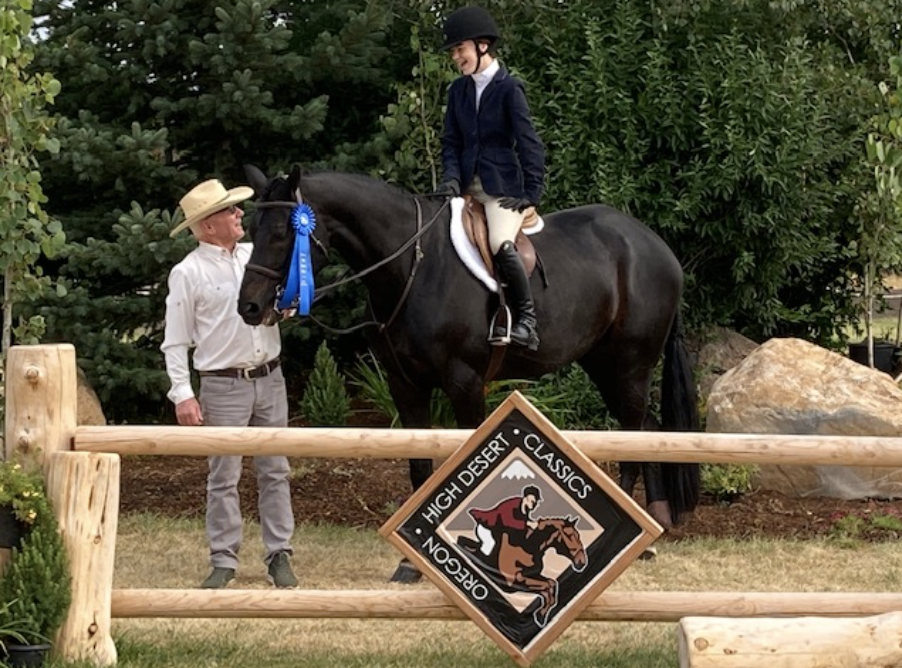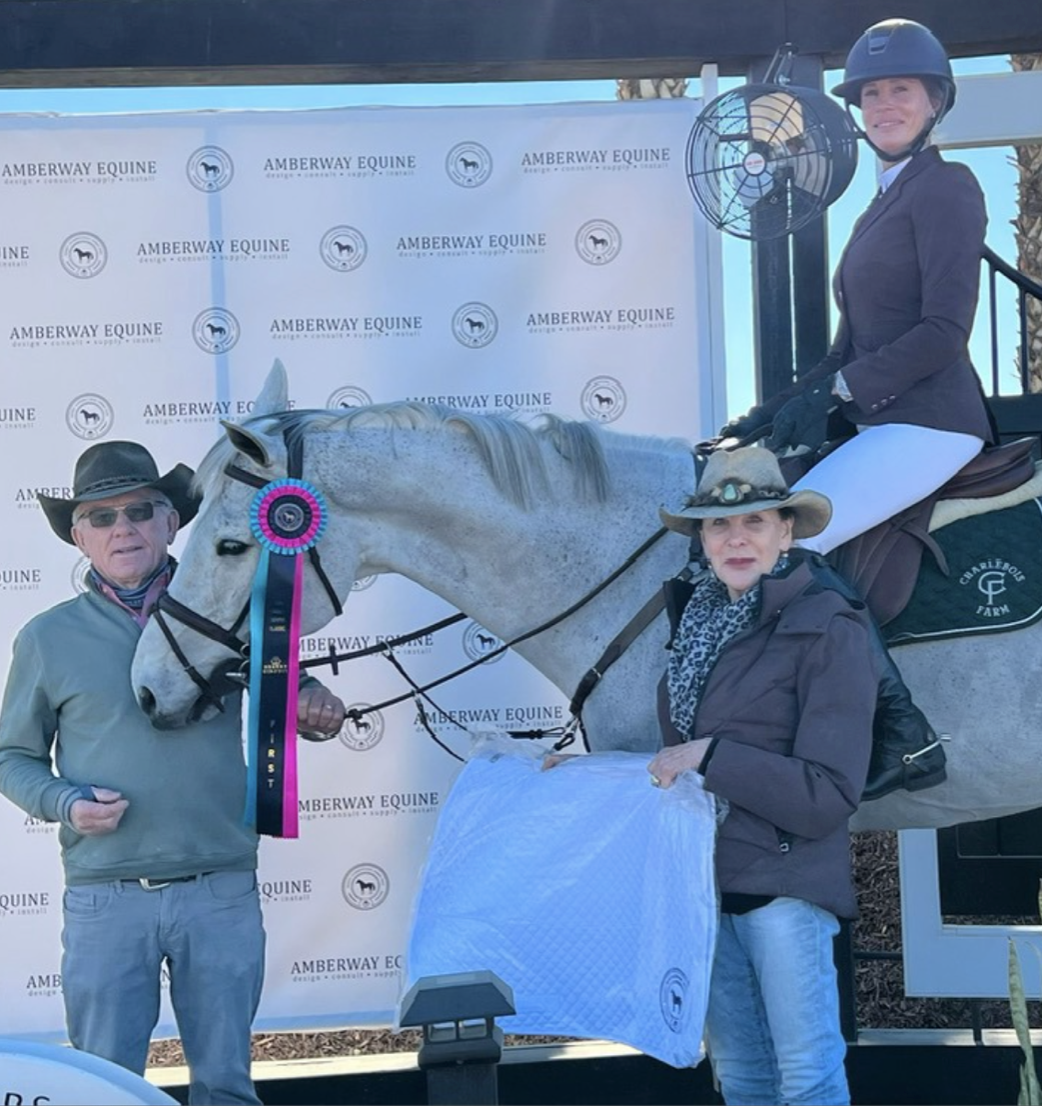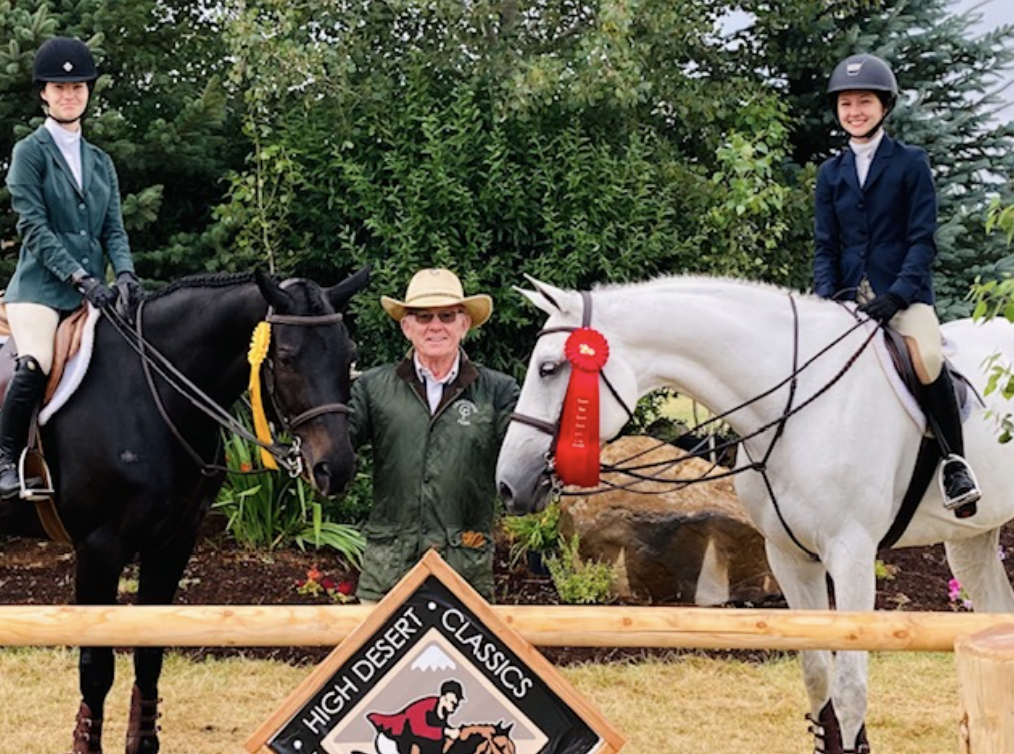
John Charlebois on Moving Horses and Riders Up into a New Division
Blog
John Charlebois on Moving Horses and Riders Up into a New Division
John Charlebois owns and operates Charlebois Farm in Portola Valley, California. The farm has called Silicon Valley home for the last 25 years and offers hunter, jumper, and equitation training for horses and riders at all levels.
“My teaching goal has always been to instill a love and appreciation for riding and horses by creating a learning environment that is safe, fun, progressive, and goal-oriented,” John says.
He started riding ponies when he was seven-years old and knew he wanted to ride and train horses for the rest of his life. As a young man he pursued training programs and worked with different professionals, before starting his own business in upstate New York. John then moved to California, again worked with others, and ran his own business.
“It’s all about experience and practicing what you have learned, and making the horses go better. I watch other trainers, talk with them, and ask questions,” he says. “I’ve also helped young trainers when they’ve asked me questions.”
We talked with John about moving horses and riders up into a new division. The process begins with an evaluation of the horse and rider and has its foundation in their confidence levels.

John and Claire Archer on Fanta Light B celebrate a successful class.
Evaluating Horses and Riders
Evaluating the horse and rider is the first step, and knowing what type of horse is needed, a hunter, jumper or equitation mount is the first requirement. John looks for horses that will help the rider achieve their goals and bring them along in the sport.
“My philosophy is to find horses that are a safe and suitable size-wise, and type-wise, whether an aggressive or passive rider etc. I find a horse that’s overqualified for the job, and I have faith in my teaching and that I can get the rider to where the horse is, and then they won’t outgrow the horse too quickly,” he says.
Desire and confidence are the two characteristics that John looks for in his riders to know that they are ready to move up. “Some kids are very confident jumping three-feet but shaky when you put it up, and they are not ready,” he adds. “Confidence is key and when they are confident, they want to push themselves. Some are too confident and want to move up, others need a longer runway so to speak, but then become superstars when they take off. With the overconfident riders, I keep it in real-ville. If they aren’t riding well, they stay at the level they’re at, and I support them if they’re riding well. Horses love confident rides.”

John with one of his students after a wining class at Oregon’s High Desert Classics.
Moving Up
There are no specific rules about moving horses and riders up, rather, it’s a philosophy. John listens to his riders, and if they have a horse that can move up, he goes for it. Once riders are confidently riding and jumping and express a desire, John moves them up a level at home. The old rule was that if they were champion two or three times in the last six horse shows, it’s time to move up. But, if the rider has the desire, John is willing to move them up. He adds that it’s a tough sport, and that some riders don’t want to move up, and that’s okay too, but that the decision to move up has to come from the rider.
“I’m the first to stretch a person but want to keep them confident, and not over face them,” John continues. “Confidence is key, if you move them up too quick, it steals their confidence and then you have a problem. You’ll know when they want to move up and push themselves.”
It’s important to evaluate horses and riders that are in the process of moving up and make sure they are not being over-faced. “Our job is to keep the horses and riders confident. If both are confident, then the sky is the limit. I love my programs to be goal oriented, and have goals for my horses and riders, whether it’s riding a little better or moving up. Good goals create results – that’s the way we see our future. Trainers should talk to their riders and be clear on what their goals are – people with riding goals are best kind of students you can have. Defined and realistic goals equal tremendous results.”
John uses a general set of training principles. He doesn’t jump high at home, and sticks to solid basics instead, teaching them to ride in balance and create an invisible ride. He loves to have his beginners and intermediate riders stand up in the stirrups at the trot and canter, it gets their heels down and builds muscle memory, so they can keep their heels down without conscious thought. He also has riders do little gymnastics to work on their position. Examples include lines with canter poles and adding or taking out strides. The purpose is to always be working at the horse’s rideability and the rider’s skill.
Each of his horses is ridden professionally on Tuesday and then they teach from Wednesday through Saturday. Riders may have flat work or a combination of flat and jumping work. John uses low jumps in these training sessions, again working on the basics. He notes that the mechanics at two or three feet is the same as the mechanics at higher jumps. Riders practice low jumps, so they don’t overdo the horses but improve as riders.

Ashley Fey and Castiello winning the High AA Jumper Classic here in Week 2 at The Desert International Horse Park. Photo courtesy of John Charlebois.
Success Builds on Success
“Our gift is to make a positive difference in someone’s riding life,” John says. “There are so many life lessons you can learn from riding horses – success, failure, getting humiliated by being slammed in the ring, you learn that you are never defeated, pick yourself up and continue on the journey. Success builds on success. We keep building the blocks of success.”
One of the reasons that John’s horses and riders are so successful at moving up is because he builds their confidence and then celebrates their successful riding moments. Of course, they also learn from their mistakes, but then he has his riders let the mistakes go. Whatever emotions you have are contagious, and positive attracts more positive. These skills carry forward to the rest of a person’s life.
“This is a great sport for young people because horses empower kids,” John concludes. “It’s a tremendous thing for everyone. I’ve seen adults and kids be so empowered. Riding teaches them to care. They understand they can’t do it without the horse, and they make sure the horse is happy. You see someone start riding and they blossom into better people because they are empowered by these wonderful animals they love so much. Confident, happy riders and confident, happy horses is a wonderful thing.”

John and two of his students in Oregon
To see the current horses that John Charlebois has listed for sale be sure to visit his ProEquest profile!
